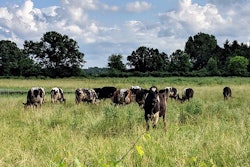
Mycotoxins have been confirmed in three additional states, while crop progress remains behind average, according to Neogen’s Monday Mycotoxin and Crop Report from July 9.
Corn planting is complete but, due to wet conditions, not all intended acres were planted. Ninety-four percent of corn has emerged, 6 points below the five-year average. States the furthest behind are Michigan, Ohio, Indiana, North Dakota and South Dakota. Fifty-six percent of corn is in good to excellent condition; 12% is in poor to very poor condition. Michigan, Ohio and Missouri have the highest poor to very poor conditions in corn.
Deoxynivalenol has been confirmed in wheat in Virginia, Kentucky and Indiana. This is in addition to previously confirmed reports in North Carolina and Maryland.
Also known as Type B trichothecenes, deoxynivalenol can cause reduced feed intake, intestinal damage, diarrhea, oxidative stress, immune suppression or vaccine failure, reduced weight gain, poor reproduction, abortions/mummies, and reduced milk production and quality/increase in somatic cell counts. In poultry, they can cause reduced egg quality, fatty liver and impaired feathering. In pigs, they cause a range of problems from feed refusal to stillbirths.
Other crop progress
Winter wheat is 97% headed out, which is 3 points below the five-year average. Sixty-three percent of winter wheat is in good to excellent condition; 10% is in poor to very poor condition. Thirty percent of winter wheat is harvested – 18 points below the five-year average. States the furthest behind their five-year averages are Illinois, Missouri, Kansas and Oklahoma.
Twenty-five percent of spring wheat is headed out, which is less than half of the five-year average of 52%. Seventy-five percent of spring wheat is in good to excellent condition; 4% is in poor to very poor condition.
Thirty-one percent of barley is headed out, which is 21 points below the five-year average. Seventy-two percent of barley is in good to excellent condition, and 5% is in poor to very poor condition.
Oats are 58% headed out, 23 points below the five-year average. Sixty-five percent of oats are in good to excellent condition, and 7% are in poor to very poor condition.

















